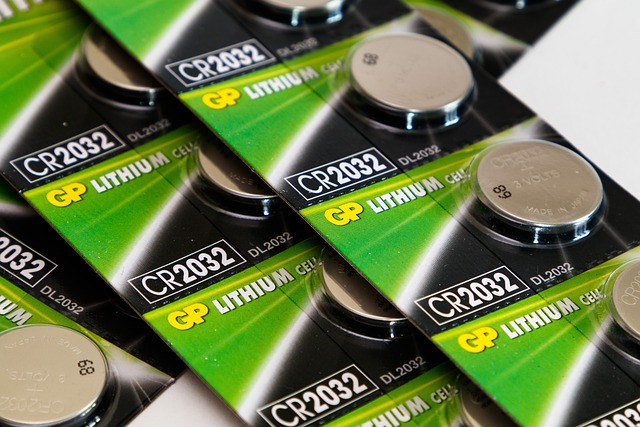When your device's battery life starts waning, it's crucial to replace it with a compatible battery that matches your device's voltage, capacity, and compatibility requirements. For instance, a typical lithium-ion battery for mobile devices should have a 3.7-volt rating. To find the right replacement, consult your device's manual or the manufacturer's guidelines, focusing on the ampere-hour (Ah) rating to understand the battery's charge holding capability—a higher Ah means longer usage between charges. Opt for high-quality batteries from reputable suppliers to ensure safety and longevity.
Proper storage conditions are vital for maintaining a replacement battery's health; keep it at stable room temperature to preserve electrolyte balance and overall cell health. Avoid full discharge or charging states that can lead to self-discharge or 'memory effect.' Periodically check the charge level and engage in regular partial cycling to maintain readiness. Use protective storage solutions to safeguard against temperature extremes, humidity, and short circuits.
Charging practices directly affect battery health. Always disconnect your device from the power source once it's fully charged to prevent overcharging. Use a compatible charger to extend battery life, and avoid letting your battery deplete completely. Keep your charge levels between 40% and 80%, as this 'state of health preservation' minimizes wear on the cells. Utilize adjustable charging modes wisely to provide consistent power without overstraining the battery.
Monitoring your device's battery health is essential for its longevity and peak performance. Utilize built-in tools to track usage patterns, charge cycles, and capacity to assess battery health. If a significant drop in performance occurs, it might be time for a replacement. Regularly updating your device's firmware can take advantage of new battery-saving features. Manage app permissions and background data usage, and adjust settings like screen brightness and power-saving modes to conserve energy. Keeping the battery contacts clean with a water and baking soda solution also helps maintain performance. By following these maintenance routines and smart user practices, you can significantly extend the life of your device's replaceable battery.
Replacing a device’s battery is a common task for maintaining its functionality and longevity. With technology advancing rapidly, ensuring your replacement battery lasts as long as possible is key to optimal performance. This comprehensive guide delves into the top 10 tips for extending the lifespan of your replacement battery, covering everything from understanding your device’s power needs to responsibly recycling your used batteries. From choosing the right battery to mastering charging best practices and monitoring health, learn how to navigate these processes with ease and extend the life of your device. Dive into our expert advice to maximize your battery’s potential and enhance your user experience.
- Understanding Your Device's Power Needs: Choosing the Right Replacement Battery
- Storage Matters: Properly Storing Your Spare Battery to Extend Its Lifespan
- Charging Best Practices: How and When to Charge Your Replacement Battery for Optimal Performance
- Monitoring Your Battery Health: Utilizing Device Tools to Keep Tabs on Your Battery's Condition
- Software Optimization: Using Settings to Preserve Battery Life in Your Devices
- Maintenance Routines: Regular Check-Ups and Cleanings to Maintain Your Replacement Battery's Efficiency
Understanding Your Device's Power Needs: Choosing the Right Replacement Battery

When your device begins to show signs of a waning battery, it’s crucial to consider replacing it with a new unit tailored to your gadget’s specific power requirements. The first step in this process is understanding your device’s power needs. Each electronic device has its own set of specifications for voltage, capacity, and compatibility that must be met by the replacement battery you choose. For instance, smartphones have different battery types than laptops, and not all batteries are interchangeable across devices or even within the same model but from different manufacturers. To ensure optimal performance and longevity, it’s essential to select a battery that matches these specifications precisely.
To make an informed decision, you should refer to your device’s manual or manufacturer’s website for detailed information on the recommended battery type and capacity. Additionally, consider the ampere-hour (Ah) rating, which indicates how much charge the battery can hold; a higher Ah means a longer usage time between charges. Also, verify the battery’s voltage requirement—typically 3.7 volts for lithium-ion batteries common in mobile devices. By matching the correct battery to your device, you not only avoid potential damage from power mismatches but also enhance the overall efficiency and lifespan of your electronic device. Remember to purchase replacement batteries from reputable suppliers to guarantee quality and safety standards.
Storage Matters: Properly Storing Your Spare Battery to Extend Its Lifespan

When it comes to maintaining the longevity of a replacement battery, storage conditions play a pivotal role in its lifespan. Unlike when the battery is in use, where it gradually discharges and recharges, the period of storage demands careful handling to prevent degradation. To ensure your spare battery remains potent for as long as possible, it’s crucial to keep it at a moderate temperature, away from extreme heat or cold. Extreme temperatures can accelerate chemical reactions within the battery, leading to capacity loss over time.
A stable room temperature is ideal for storing your replacement battery; this helps maintain the electrolyte balance and the overall health of the battery cells. Additionally, storing your battery at a full charge or near full capacity for an extended period can cause degradation due to self-discharge and the formation of ‘memory effect’. Therefore, it’s recommended to slightly discharge the battery before putting it into storage, and then check on it every few months to ensure it retains its charge. Regularly cycling the battery by partially charging and discharging it can also help maintain its readiness for use when needed. Proper storage solutions, such as a cool, dry place with moderate humidity, along with a suitable battery case or wrapper designed to protect against short circuits, will further enhance your spare battery’s lifespan, ensuring it is ready to replace when the time comes.
Charging Best Practices: How and When to Charge Your Replacement Battery for Optimal Performance

When it comes to maintaining the longevity of your replacement battery, understanding the best charging practices is paramount for optimal performance. To begin with, avoid overcharging by disconnecting your device from the power source once the battery reaches a full charge. Many devices have built-in safeguards to prevent overcharging, but it’s always wise to monitor the charging process. Additionally, consider using a high-quality charger that is compatible with your device; this can help prolong the lifespan of your replacement battery.
Charging patterns also play a significant role in preserving your battery’s health. Instead of charging your device from zero to full every time, try to keep it between 40% and 80% charged as often as possible. This practice, known as ‘state of health preservation,’ helps prevent stress on the battery cells. Furthermore, if your device supports it, opt for trickle charging or fast-charging modes during extended periods of low usage. This not only provides a consistent charge but also reduces the strain on the battery, which contributes to its overall longevity. By adhering to these tips and incorporating smart charging habits, you can significantly enhance the lifespan of your replacement battery and ensure it performs at its best for as long as possible.
Monitoring Your Battery Health: Utilizing Device Tools to Keep Tabs on Your Battery's Condition

Regularly monitoring your battery health is pivotal for extending its lifespan and ensuring optimal performance. Many modern devices come equipped with built-in tools that allow users to track their battery’s condition in real time. These tools provide insights into battery usage patterns, charge cycles, and capacity. For instance, smartphones often have a ‘Battery Health’ feature that assesses the maximum capacity of the battery and offers recommendations if it falls below an acceptable threshold. By paying attention to these metrics, you can make informed decisions about when it might be time to replace your battery. It’s advisable to check this information regularly, especially if you notice a significant decline in battery performance or endurance between charges. Additionally, avoiding extreme temperatures and managing app permissions can further preserve your battery’s health. If you find that your battery’s performance is consistently below its expected capabilities, it may be an indication that a replacement is necessary. Utilizing these device tools effectively can save you from unexpected power outages and help maintain the efficiency of your electronic devices.
Software Optimization: Using Settings to Preserve Battery Life in Your Devices

When it comes to extending the life of your replacement batteries, software optimization plays a pivotal role in preserving their longevity. Modern devices are equipped with a myriad of settings and features designed to manage energy consumption efficiently. Regularly updating your device’s firmware ensures that you benefit from the latest battery-saving algorithms and improvements. For instance, enabling power-saving modes under ‘Settings’ can significantly reduce the strain on your battery during periods of low activity or when an alternative power source isn’t available. Additionally, configuring your device to limit background data usage for apps not in use can prevent unnecessary battery drain. This is particularly crucial for devices with replaceable batteries, where conserving power can delay the next replacement cycle.
Furthermore, smartphones and other portable electronics often come with built-in battery saver options that can be customized according to your usage patterns. These settings allow you to set thresholds at which the device will limit performance to extend battery life. Adjusting screen brightness, disabling Bluetooth, Wi-Fi, and location services when not needed, and using dark mode are additional settings that contribute to longer battery endurance. By thoughtfully utilizing these software features, you can make your replacement battery last significantly longer, ensuring your device operates at peak efficiency without frequent battery replacements. Remember to periodically review the battery usage statistics provided in the ‘Settings’ menu to identify and address any apps or services that are consuming more power than necessary. With consistent maintenance and smart usage, you can optimize your device’s software to get the most out of your replacement battery.
Maintenance Routines: Regular Check-Ups and Cleanings to Maintain Your Replacement Battery's Efficiency

Regular maintenance is key to extending the lifespan of your replacement battery and ensuring it operates at peak efficiency. Establishing a routine for periodic checks can prevent premature aging and extend its service life. Begin by examining the battery’s charge levels regularly, keeping track of how long it holds a charge versus how much it needs to recharge. This helps identify any deviations from normal performance early on. Additionally, cleaning the battery contacts is a crucial practice as buildup can interfere with electrical conductivity and lead to reduced efficiency. Use a mild solution of water and baking soda to gently clean the terminals, ensuring they are free of corrosion and debris. This simple maintenance step can significantly improve the battery’s ability to receive and deliver power. It’s also wise to store your replacement battery at room temperature if it will be inactive for an extended period, as extreme temperatures can compromise its lifespan. By incorporating these maintenance routines into your schedule, you can ensure that your replacement battery performs reliably for years to come. Proper care and attention, such as regular monitoring and timely cleanings, are the most effective steps you can take to maintain your battery’s efficiency and longevity. Remember to follow the manufacturer’s guidelines for specific care instructions tailored to your particular battery type, as these can vary.
Optimizing your replacement battery’s longevity is a multifaceted endeavor that hinges on a blend of understanding your device’s power needs, proper storage, responsible charging habits, and proactive monitoring and maintenance. By selecting the right replacement battery tailored to your gadget, storing it correctly, following best practices for charging, regularly checking its health, optimizing software settings, and performing routine checks and cleanings, you can significantly extend its lifespan and enhance its performance. Implementing these ten tips from our article serves as a guide to ensure your replacement battery operates at its peak for the longest time possible. Remember, the key to maintaining a robust power supply lies in the details of care and attention you provide your device’s battery. For long-lasting performance, these practices are indispensable.
